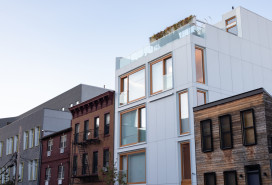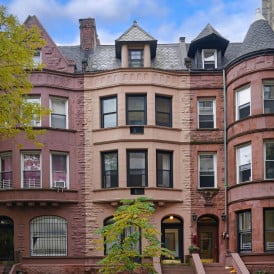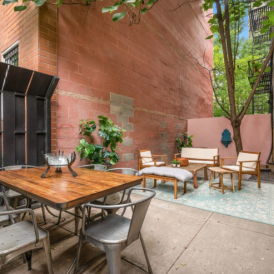The pet-friendly premium: is it pricier to buy in a building that allows animals?

This may come as no surprise, but it's tougher to find an apartment if you've got a pet, particularly a pooch: plenty of buildings ban them outright; have restrictions on size, breed or number; or charge fees to keep them in your apartment. But is it more expensive to buy in a building that welcomes your animals versus one that doesn't?
The short answer? Yes and no.
First, a look at the data. The average sale price of an apartment in a pet-friendly building is $2.17 million, versus $1.3 million for no pets and $691,000 for no dogs specifically, according to data guru Jonathan Miller, who's been watching sales in pet-friendly and no-pets buildings for three years, after fielding countless calls from condo and co-op boards asking whether a prohibition on big dogs would affect property values. (There are even a handful of sales every year in buildings that specifically ban cats, Miller says, but not enough to put together an average.)
Drilling down further, Brendan Fairbanks, founder of apartment search site Perchwell, found that asking prices for pet-friendly condos are cheaper on average than no-pets condos, while the opposite is true of co-ops, where you’ll pay more to live in a building that allows your four-legged friends. The gap gets bigger as the number of bedrooms goes up, with a tiny difference in price in one-bedrooms and a sizable difference in three-bedrooms:
CLICK TO ENLARGE: Manhattan asking prices in pet-friendly and no-pets buildings
So it would seem that there is a premium on pet-friendly buildings. Afterall, the more restrictions a building puts on purchasers (i.e. effectively refusing pet owners), the fewer people will want to buy there, potentially cutting prices. For some buyers, a building that accepts pets is almost like an amenity, and they might pay more for it.
But hold on—is the difference in prices really the result of the building's stance on animals? Not necessarily. “At the moment, there’s no compelling research that adds or detracts from value based on pet policy,” Miller says. “There are people that have pets that seek out buildings that have a pro pet policy, and there are people that don’t want pets that seek out buildings that don’t, and then there are people that could care less.”
The reason for the price gap may have more to do with the types of buildings that allow pets, rather than their policies. For example, buildings that ban dogs specifically (as opposed to all pets) may be smaller properties with smaller apartments, which would be cheaper because of their size, not because of their inhospitable attitude toward your golden retriever. Likewise, newer buildings may take a more accepting view towards your furry friends than older, more traditional co-ops, and since new condos tend to be more expensive, that could explain the gap. "Those trends are influenced by how that market is doing, not necessarily that [prices in] pet buildings are rising faster than ones that don't allow pets," Miller says.
Which means that, regardless of the numbers, you probably won't shell out more to buy a place that accepts Spot—unless, of course, he needs his own bedroom.
Related:
























